EPA Considers Options for Reuse and Discharge of Oil and Gas Wastewater
U.S. oil and gas companies are setting production records, while also pumping up enormous volumes of salty, chemical-laden water. The question now: What to do with the noxious water?
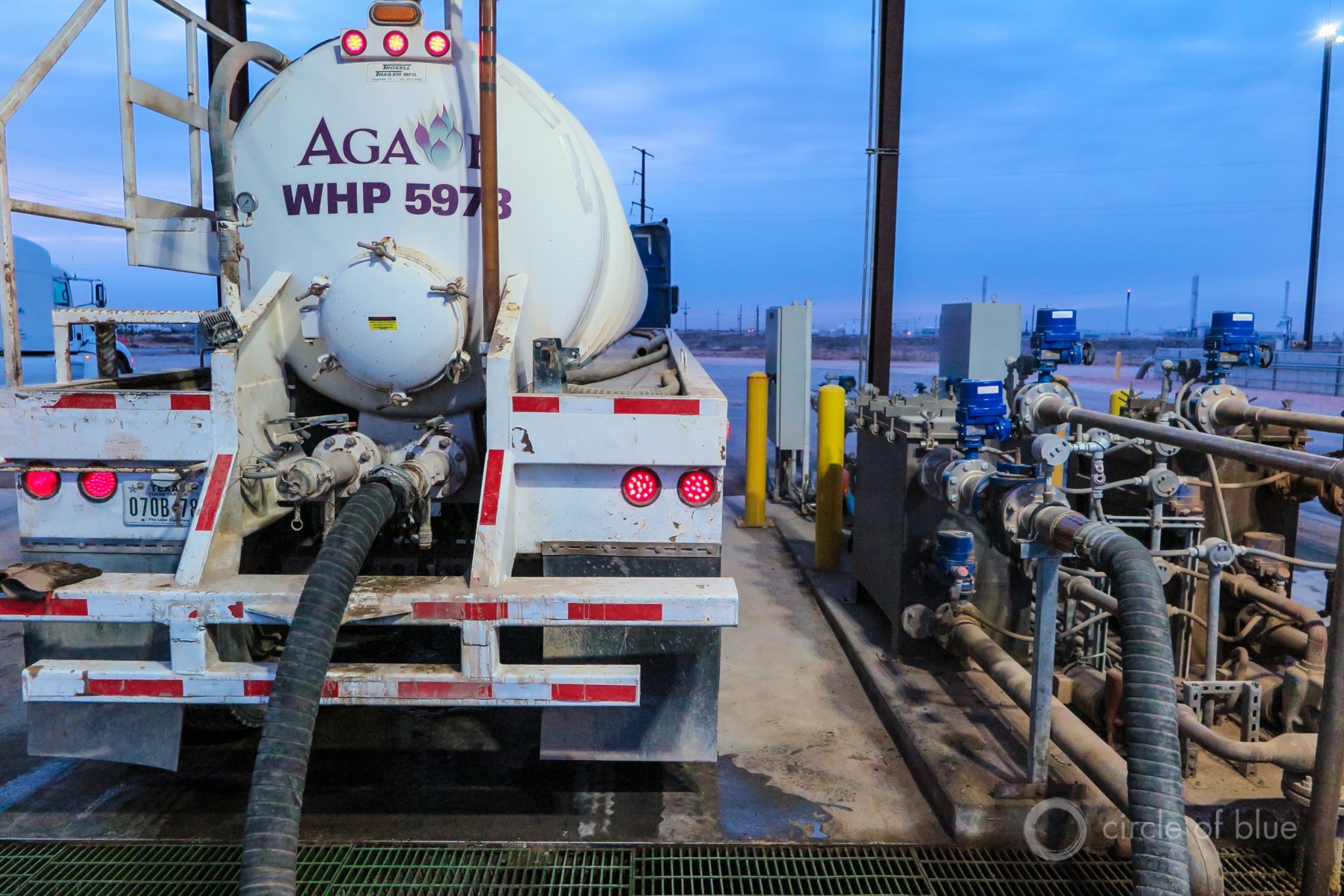
Every day millions of gallons of wastewater from oilfield operations moves across the desert of southeast New Mexico’s Permian Basin. About half is recycled and reused to drill and frack new oil wells. The other half is injected into the ground at wastewater disposal sites like this one near Carlsbad. Photo © Keith Schneider / Circle of Blue
By Brett Walton, Circle of Blue
As it weighs giving states, tribes, and fossil fuel companies more leeway in how they handle rising volumes of oilfield wastewater, the U.S. Environmental Protection Agency will have to balance regulatory flexibility with the potential for harm to the environment and human health.
That’s one conclusion from a draft study the agency released on May 15. The study describes current industry practices for managing wastewater, assesses the need for additional options, such as discharging water into streams or treating it for use in agriculture, and outlines impediments to reuse.
Most of this “produced” water — a mix of fracking fluids and salty, sometimes radioactive water that exists deep underground — is viewed as a waste product. But that is changing. With most oil and gas production occurring in arid regions where water supplies are constrained, there is strong interest among some regulators for reuse. Companies are also keen to rid themselves of a growing liability that threatens their capacity to pump oil.
There are several obstacles, the EPA found. One is economic. Disposal by injection costs less than $1 per barrel of water. Treating water depends on the local water chemistry and the concentration of contaminants, but it is at least several times more expensive than injection.
A barrier mentioned by nearly every group that was interviewed for the study is a lack of data. The ignorance is partly on the health and environment side of the equation: the chemistry of produced water, which varies by region and well, the toxicity, and the effect on ecosystems. It also extends to the technical side: how much water is disposed of by injection, what the underground pressures are in those formations, and the effectiveness of treatment technologies.
Some state regulators said they do not have the technical expertise to write water quality permits for produced water because there are no standards for many of the chemicals it contains.
These knowledge gaps should be a caution signal, argues Nichole Saunders, an attorney with the Environmental Defense Fund.
“Priority number one is making sure we have the data and science needed to make an informed decision,” Saunders told Circle of Blue. “The priority shouldn’t be how to incentivize reuse.”
The oil and gas business is as much about water management as it is the hunt for hydrocarbons. To start with, millions of gallons of water, on average, are required to frack a well. Once production begins, more water than oil flows out of the ground — in states like California, by a factor of 10 or more.
The majority of produced water today is sent back where it came from: deep underground. It’s the cheapest form of disposal, yet underground injection has drawbacks. In states like California the practice has come under scrutiny for contaminating protected freshwater aquifers. In Oklahoma, injection caused an outbreak of earthquakes. In the Permian basin of Texas, so much produced water is being generated that regulators are restricting underground injection in order to prevent seismic events.
Federal regulations currently prohibit oil and gas wastewater from being directly released to creeks and streams, except for areas west of the 98th meridian. Those states are allowed to discharge as long as the water is “good enough quality” — the language in the authorizing legislation — for agriculture or wildlife. Discharge of produced water to streams is being done primarily in Wyoming, according to the study. Regulators there are considering a draft discharge permit that would allow Aethon Energy to more than double the chloride concentration in produced water it sends into creeks from the proposed Moneta Divide oil and gas project.
A much smaller percentage of produced water is reused, largely for oilfield operations but also for irrigation. Fasken Oil and Ranch, a small-scale producer in Texas, sourced three-fifths of its fracking water in 2018 from recycled produced water. Companies operating in Kern County, California, sell some treated produced water to farmers for crop irrigation. An expert panel convened by the State Water Resources Control Board is evaluating the safety of these crops for human consumption.
EPA officials interacted with a wide range of stakeholders to gather information for the study. During eight months of conferences, webinars, and phone calls they met with tribal officials, regulatory agencies from at least 10 oil and gas states, industry groups, wastewater treatment operators, environmental organizations, and academics.
Public comments on the draft are being accepted through July 1 via oil-and-gas-study@epa.gov. The study will be finalized later this summer.
Brett writes about agriculture, energy, infrastructure, and the politics and economics of water in the United States. He also writes the Federal Water Tap, Circle of Blue’s weekly digest of U.S. government water news. He is the winner of two Society of Environmental Journalists reporting awards, one of the top honors in American environmental journalism: first place for explanatory reporting for a series on septic system pollution in the United States(2016) and third place for beat reporting in a small market (2014). He received the Sierra Club’s Distinguished Service Award in 2018. Brett lives in Seattle, where he hikes the mountains and bakes pies. Contact Brett Walton

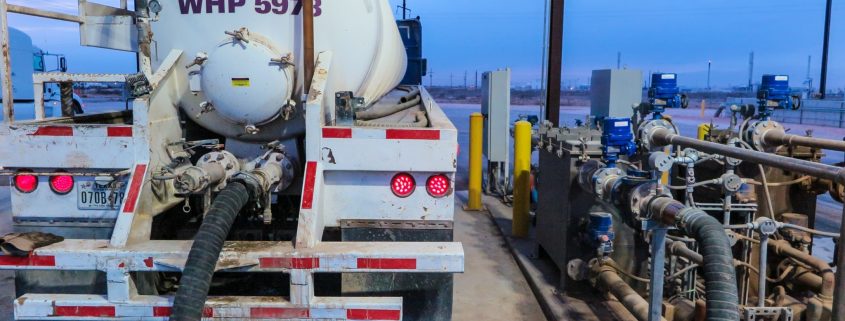


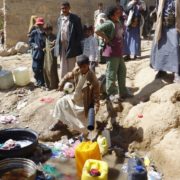

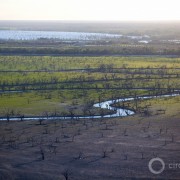
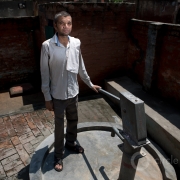



Leave a Reply
Want to join the discussion?Feel free to contribute!